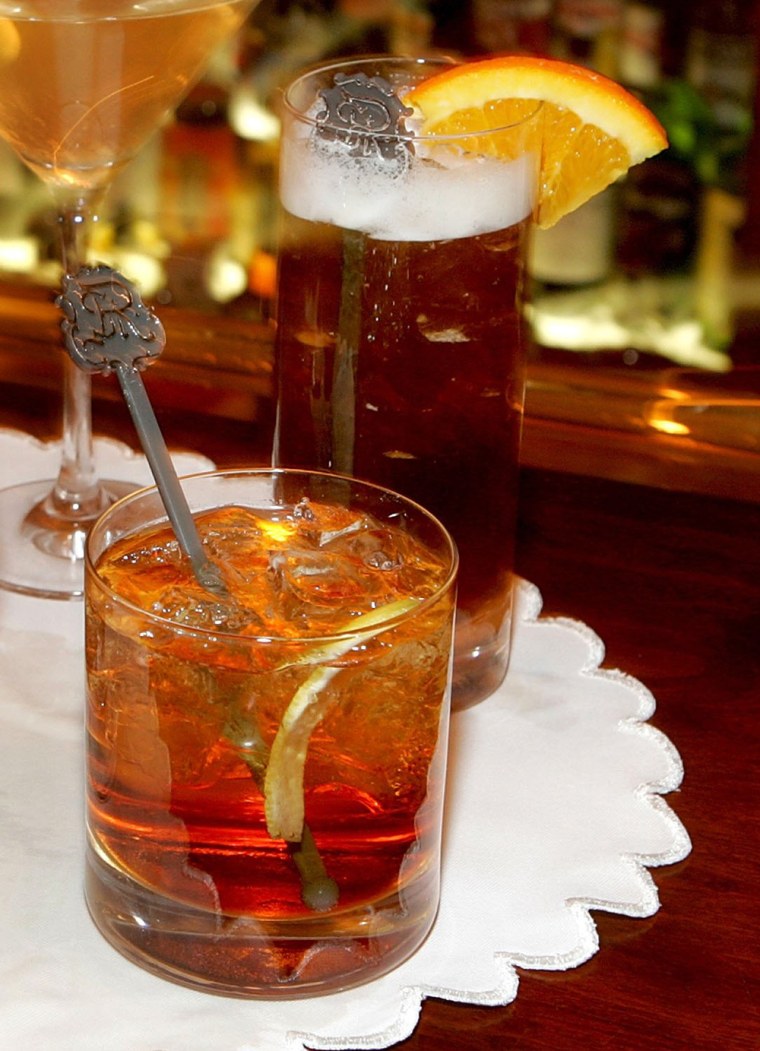For most of us the holiday season is an ambivalent combination of joy and stress, feasting, good cheer, and maxed-out credit cards. But for one business sector it is a nail-biting, make-or-break six weeks—the liquor industry.
As Frank Coleman, senior vice-president for public affairs and communications for the Distilled Spirits Council of the U.S. (DISCUS) observes, "It's absolutely a huge chunk of the year's revenue." And the numbers bear him out: According to the Adams Liquor Handbook, a compendium of industry statistics, sales of spirits from January through November average 7.9% of the yearly total, but come December that figure jumps to 12.7%.
This shows up at retail, too. Sam's Wines & Liquors in Chicago does over 40% of its yearly spirit sales from Thanksgiving to the end of the year, according to President and Chief Executive Brian Rosen.
There are two drivers for this increase in holiday sales: gift-giving and stocking the bar at holiday events, whether it's corporate hospitality or a gathering of neighbors and friends.
Showing off the premium hooch
But this is about more than simply an increase in sales; there are other, more subtle marketing strategies at play during the holiday season. As Coleman explains, "In many cultures around the world, premium distilled spirits are considered a gift of distinction, something that shows your esteem for the person you are giving your gift to."
According to Gary Galanis, vice-president for corporate communications at liquor giant Diageo, "The increase in sales that we see in November and December…is largely driven by the sales of very high-end spirits because they are given as gifts, and prestige is an important element of that decision."
This leads producers to showcase their top-end products during the holidays, especially their new top-end products. Galanis says that "for Diageo, the opportunity in the holiday season is really about showcasing our premium brands." For instance, this year the spirits conglomerate introduced Cask 16, a new version of its Crown Royal Canadian whisky, and the holidays represent "a tremendous opportunity for consumers to trade up from the original Crown Royal."
All this feeds into the overall growth of the spirits business, especially the high-end spirits business. According to DISCUS figures, shipments of all spirits increased by 15% from 2002 to 2006 but shipments of superpremium brands surged 72% during the same period.
The current cocktail craze
Much of this growth is being driven by the current popularity of cocktails, and if anyone is in doubt that we are currently enjoying a new golden age cocktails, they need look no further for confirmation than the publication in November of Imbibe! by Perigee Books ($23.95). Written by David Wondrich and Dale DeGroff, it chronicles the life and works of "Professor" Jerry Thomas, the flamboyant, Runyonesque 19th century showman, self-promoter, and bartender extraordinaire.
One can get an idea of Thomas' panache from a look at his star turn, the Blue Blazer, which involved the diamond-laden Thomas pouring an arc of flaming whisky from one mug to another — definitely not something to try at home. But Thomas holds more than historical interest for contemporary cocktail enthusiasts. The author of several books, this Barnum of bartending has emerged as the patron saint of today's creative mixologists in large part because he initiated the process of codifying cocktail recipes.
"He wasn't even the first celebrity bartender," Wondrich explains. "but he was the first to get his recipes into print and was certainly the most famous bartender in the 19th century.… His recipes give us a sort of backstop, a place to trace drinks back to. It allows us to clear off all the foliage with which they have been covered over the intervening years."
In many ways, the modern cocktail craze began when legendary restaurateur Joe Baum asked Dale DeGroff to set up a bar at his New York City restaurant, Aurora, in the 1980s. According to Wondrich, Baum told DeGroff he wanted a classy, old-style bar. No sour mixes, all fresh ingredients. When De Groff asked where he could find the appropriate information, Baum told him to go look at Jerry Thomas' books.
Keep it fresh
"The use of fresh ingredients is key," Wondrich explains. For years, of course, few people expected all that much from a bartender except to be ready with a top-up. Most cocktails were relatively simple — how hard is it to find the ingredients for a martini, after all? But the combination of Prohibition and women's liberation added greatly to the popularity of mixed drinks, which are primarily intended to mask the taste of the alcohol.
Ektoras Binikos, head bartender at Charley Palmer's Aureole in New York City is also a strong believer in the importance of fresh ingredients. When he came to Aureole in 1999, there was no cocktail program. But Palmer wanted to do something new, something different. "Charley realized that I was pretty good at creating [cocktails] so he asked me to explore, and he gave me the O.K. to go to the kitchen and ask for ingredients.… So I started to experiment with all these exotic ingredients, and people loved it."
Binikos also believes that customers' level of sophistication has risen, and they are more aware of what they eat and drink. "People are more open to experimentation," he explains. "We have an older crowd here, a wealthy crowd, and yet they have responded to the whole cocktail thing and are willing to try new things."
